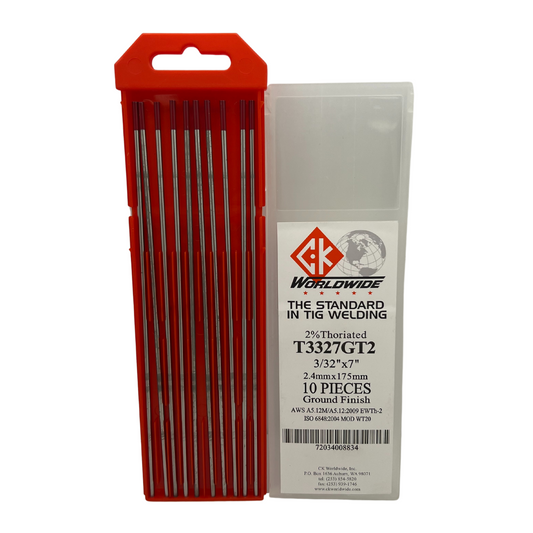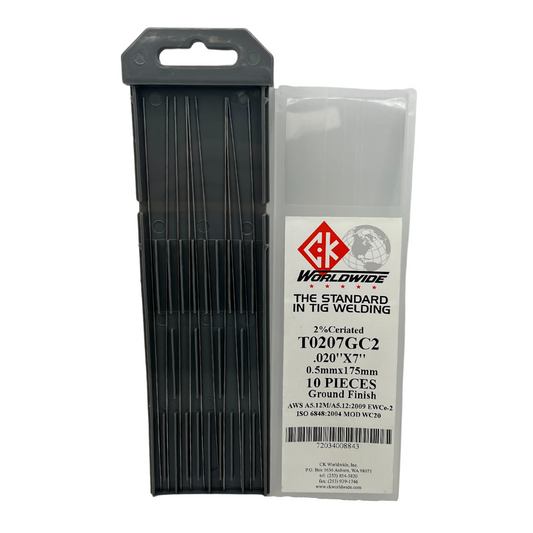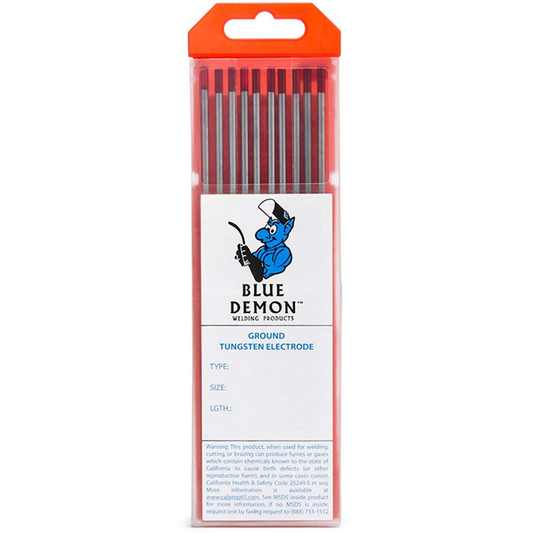Welding stainless steel demands precision and expertise, and the choice of tungsten electrode is a critical factor in achieving flawless welds. Stainless steel poses unique challenges due to its corrosion-resistant properties and varying compositions. In this blog post, we'll explore the nuances of stainless steel welding and guide you in selecting the best tungsten for the job.

Understanding Stainless Steel Characteristics:
Stainless steel is an alloy composed mainly of iron, chromium, nickel, and other elements. Its corrosion resistance and strength make it a popular choice in various industries, from construction to manufacturing. However, welding stainless steel requires careful consideration of its composition, thickness, and intended use.
Choosing the Right Tungsten for Stainless Steel:
1. Thoriated Tungsten (WT):
- Thoriated tungsten electrodes have traditionally been a popular choice for stainless steel welding. The addition of thorium enhances their electron emission and arc-starting capabilities.
- While thoriated tungsten is effective, it's crucial to note the potential health risks associated with thorium's radioactivity. Proper safety measures and awareness are essential when using this type of tungsten.
2. Lanthanated Tungsten (WL):
- Lanthanated tungsten electrodes, as mentioned in the previous blog post, are versatile and suitable for stainless steel welding as well. They offer good arc stability, easy starting, and longevity.
- WL electrodes are non-radioactive, making them a safer alternative compared to thoriated tungsten.
3. Ceriated Tungsten (WC):
- Ceriated tungsten electrodes, known for their stability and performance, can also be used for welding stainless steel. They provide a smooth arc and consistent results, making them a reliable choice for various stainless steel applications.
Considerations for Stainless Steel Welding:
1. Type of Stainless Steel:
- Stainless steel comes in different grades, each with its unique composition and welding characteristics. Austenitic stainless steels (e.g., 304, 316) are the most common, but duplex and martensitic stainless steels have distinct welding requirements. Choose a tungsten electrode that aligns with the specific stainless steel grade being welded.
2. Welding Current and Polarity:
- Just as with steel welding, the choice of AC or DC welding and the polarity used can impact tungsten electrode performance. Evaluate the welding current requirements and select a tungsten electrode that suits the application.
3. Thickness of Stainless Steel:
- The thickness of stainless steel can influence the welding parameters, including the required amperage. Consider the thickness of the material and choose a tungsten electrode that can handle the necessary current without compromising performance.
Welding stainless steel demands precision and careful consideration of both the material and equipment used. While thoriated, lanthanated, and ceriated tungsten electrodes are suitable for stainless steel welding, the choice ultimately depends on the specific requirements of the project and the welder's preferences. By understanding the characteristics of each tungsten type and considering factors such as stainless steel grade, welding current, and thickness, welders can confidently choose the best tungsten for welding stainless steel, ensuring impeccable and corrosion-resistant welds in their work.






